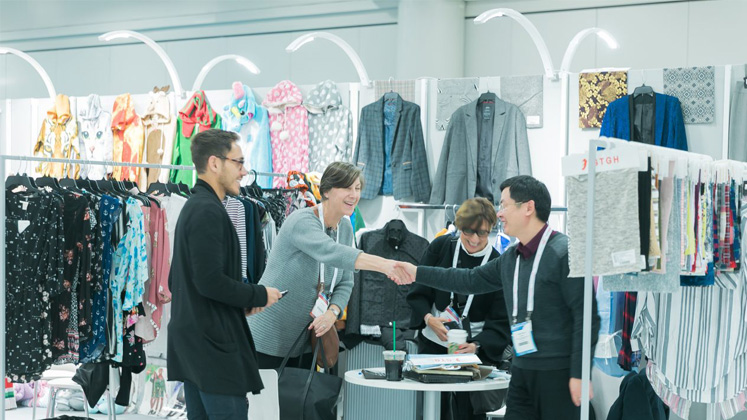
Bangladesh’s export is on a recovery path lately even as in August, export earnings grew by 14.02 per cent to US $ 3.38 billion from what was US $ 2.96 billion in August 2020, thanks to decent performance by apparels.
As per data of the EPB, in August 2021, garment export grew by 11.56 per cent to US $ 2.75 billion from what was US $ 2.47 billion in August 2020. However, things have not been good for the last almost one-and-a-half years owing to the pandemic, when the Bangladesh garment sector, had to deal with all possible fallouts, mass order cancellations to faltering price points to factory closures to delayed and defaulted payments, all of which combined to make life extremely difficult for the garment makers so much so that many of the so-called small and medium-level players have had to bow out of business for good, unable to deal with the pandemic and its aftermath.
However, if reports are to be believed, even if things are improving on the export front lately and there’s an apparent sense of déjà vu amongst many in the industry, things aren’t going to be very smooth for the smaller players going forward. Now one might ask why; more so when things are falling back on place and there’s revival already in the process.
The answer to this is the changed sourcing strategy of the buyers! According to two recent reports, the big apparel brands have consolidated their sourcing strategy owing to the pandemic and are concentrating more on the large suppliers.
According to a study by the USFIA or the United States Fashion Industry Association, even though US fashion companies showed their interest in sourcing more from Bangladesh over the next two years, the competition among Bangladeshi suppliers could intensify as the US fashion companies plan to ‘work with fewer vendors in the country’. This emerging trend implies that the competition among the thousands of Bangladeshi apparel suppliers will be greater, it noted, adding, “While competitive suppliers will benefit from more sourcing orders, smaller and less competitive ones could become more vulnerable.”
Meanwhile, according to a research brief published by the International Labour Organisation (ILO) recently, although the Asian market expanded, in terms of value, during the pre-pandemic years, the market concentration in the sector was also rising.
“Consolidation and concentration are limited to large, vertically-integrated supplier groups, but they also include a redistribution of functions between buyers and suppliers…,” stated the ILO research brief, while adding that the suppliers were increasingly taking on elements of product designing and development, inventory management, stock holding, logistics, production planning, etc.
Now, keeping in perspective the effects of the pandemic on the brands and retailers, it is not surprising to learn that more and more suppliers are now increasingly taking on elements of product designing and development, which is one aspect that the buyers have been pushing for, for long, so as to cut their expenses
Further, on this, the ILO brief underlined that the top ten garment brands, namely Adidas, Gap Inc., Inditex, Fast Retailing, H&M, Nike, PVH, Hanesbrands, Levi’s and LVMH, have steadily gained market share in the region from 8.8 per cent in 2011 to a substantial 11.4 per cent in 2020, while it went on to add that for two of the global industry’s largest apparel retailers – Amazon and Walmart – growth and dominance only intensified the concentration on sourcing and sales markets.
As the pandemic continues to test corporate resilience and favour the largest and most capitalised companies, it is unlikely that the recovery will see any change to these trends. Further consolidation may be more likely, the ILO said even as citing examples, the ILO brief showed that Nike has significantly reduced the number of both footwear and garment factories from which it is sourcing globally — the number of garment factories Nike reduced is from 631 in 2019 to 334 in 2020, a massive 47 per cent decline — and added industry observers were expecting these trends to continue well beyond the pandemic-induces crisis period, while Gap, on the other hand, which sourced products from 1020 factories in 2010-11, reduced its sourcing destination to 800 only in 2020.
…this market concentration has been complemented by consolidation of supplier bases by apparel buyers, said the ILO report brief.
These developments, if at all, are worrying underlined industry insiders, who have expressed apprehensions that it would make small and less-competitive factories of Bangladesh more vulnerable than before mainly due to unhealthy price-cut competition even as they added that the biggies sourcing from limited or a handful of suppliers will further increase the ‘unhealthy price-cut’ competition among the local suppliers and, it would also make it difficult for the small entrepreneurs, who are already hit hard by the pandemic, to survive the adverse business environment.
Speaking to the media, Director of Bangladesh Knitwear Manufacturers and Exporters Association (BKMEA), Fazlee Shamim Ehsan, stated that the trend of reducing the supplier base is ‘alarming’ as it would create ‘unhealthy’ competition among the suppliers even as he went on to add that after 2013, the entrepreneurs had invested huge amounts of money to ensure compliance and it would also be ‘unethical’ to cut suppliers from the buyers’ sourcing list.
“We request buyers not to stop sourcing from the existing ones if they don’t want to add new ones,” Ehsan pleaded.
Meanwhile, data from Mapped in Bangladesh (MiB) — MiB is a digital mapping technology that tracks the export-oriented RMG factories in Bangladesh —also showed a mixed trend of supplier base even as data from 400 MiB factories showed that 35 local garment exporters worked for Nike in 2019 and 10 out of the 35 suppliers in 2021 were not working for it and, even though the brand dropped these 10 suppliers, it was sourcing from five new local factories in 2021, which is the scene with another big name as well.
Adidas has reportedly restructured its sourcing from Bangladesh with dropping 16 factories this year from 41 in 2019 and five new factories were added in 2021 even as H&M has reportedly replaced eight new factories while six and three factories are no longer in the list of Gap and Inditex respectively in 2021, as per the MiB data while as per the apex garment makers’ body- the Bangladesh Garment Manufacturers and Exporters Association (BGMEA), around 351 of its large member units each having more than 2,000 workforce together have earned around US$ 12.29 billion or 63 per cent of its members’ total earnings in fiscal year 2019-20 even if around 1,334 factories are active and registered with the BGMEA and they logged around US$ 19.32 billion out of total US$ 27.94 billion in export proceeds from RMG during fiscal year 2019-20.
This trend of consolidating the supplier base was also confirmed by the Research Director at the Center for Policy Dialogue (CPD) — established in 1993 with the vision of creating an inclusive society based on equity, justice, fairness and good governance, Centre for Policy Dialogue seeks to be the leading institution for in-depth research and dialogue to promote inclusive policymaking in Bangladesh, and strengthen regional and global economic integration — Dr Khondaker Golam Moazzem, as well.
According to him, one of CPD’s recent studies also showed that the buyers were consolidating their supplier base by shifting to factories and countries with less uncertainties over the pandemic and cost involvement, as well as the ones that make timely shipments, said Khondaker while adding that from all these indicators, it could be assumed that the big suppliers having better cash flow were in good positions to make timely shipments and were getting more work orders especially during the pandemic.
Going by the findings of the study as well as what experts have to maintain, this ongoing trend of consolidation by the global buyers is undoubtedly a development, which is worrying for the garment makers here in Bangladesh, especially those who are small and have limited fiscal prowess as well capacities, however, how it would impact the industry dynamics, could only probably gauged, after some time. Till then, all one could do is wait and watch.






